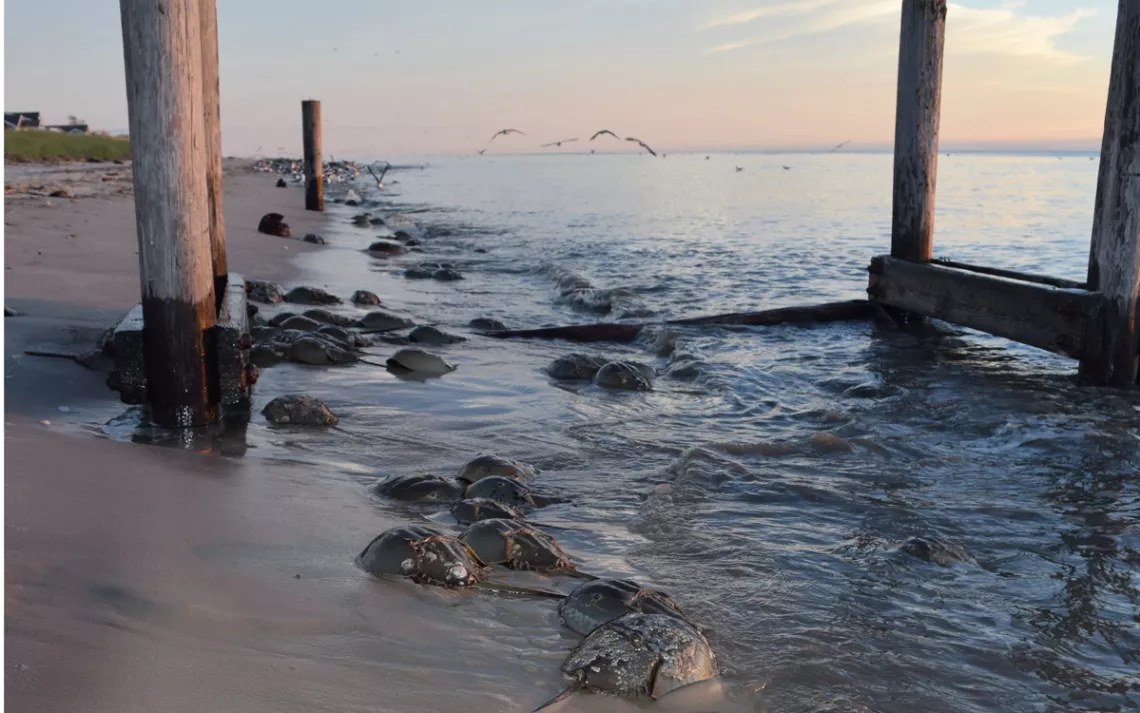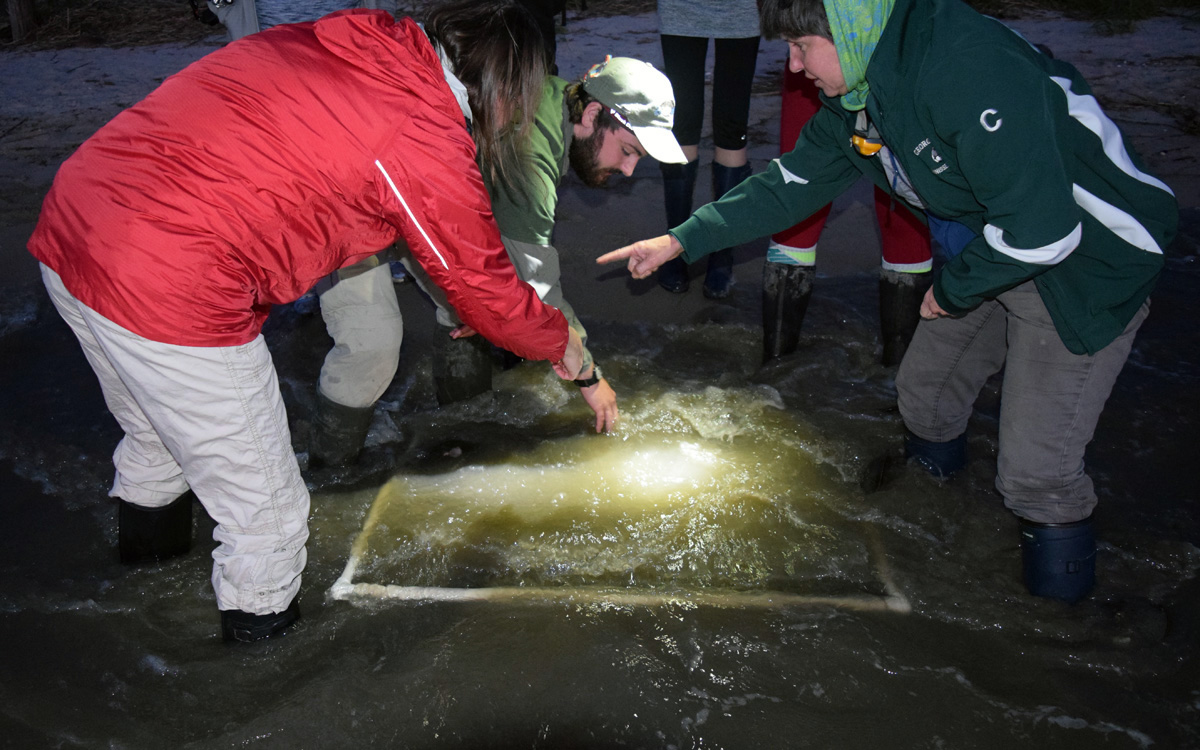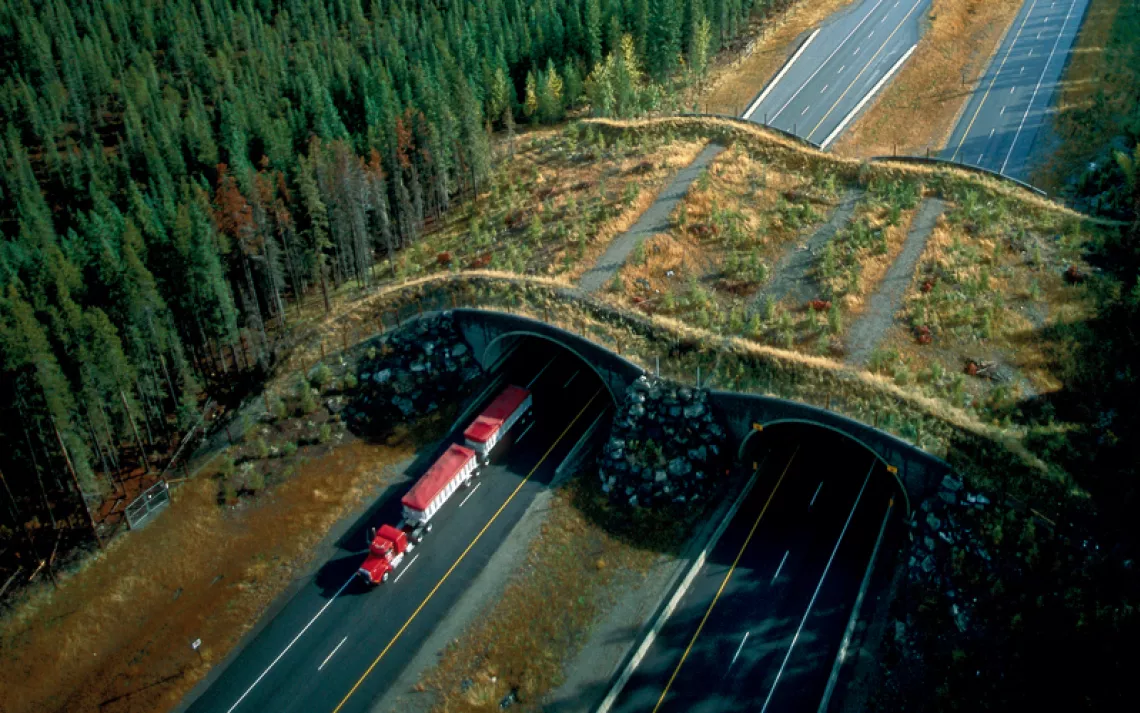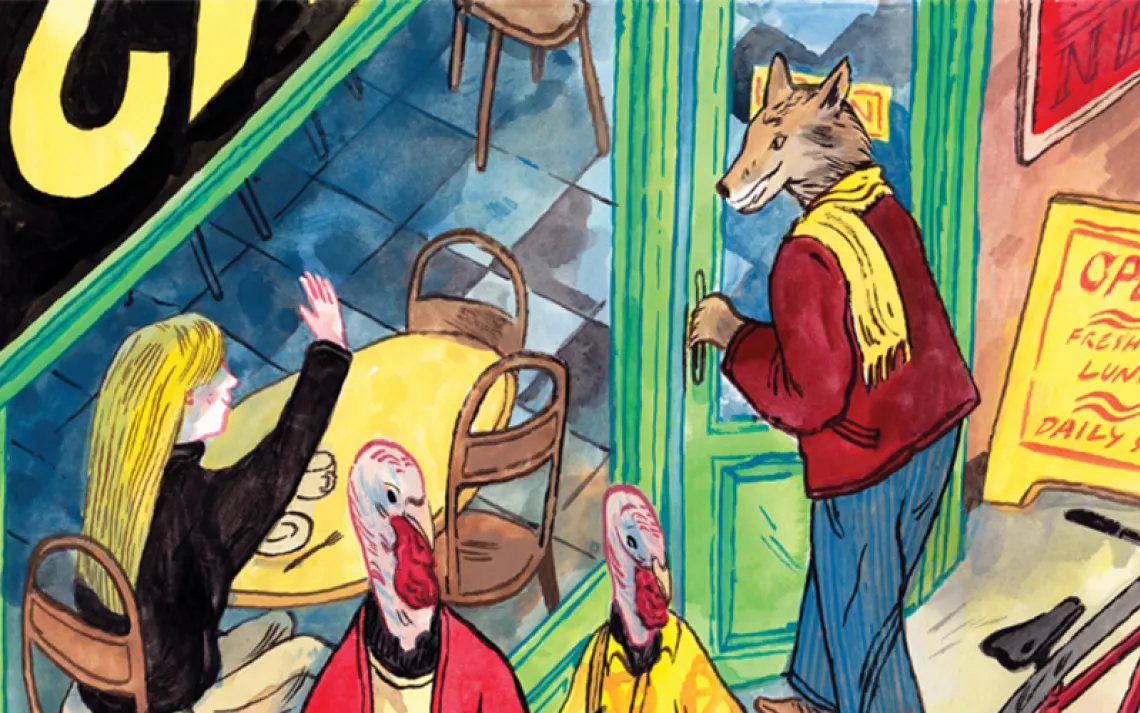Love Crab
The yearly citizen science crab orgy is upon us

Photos by Dawn Fallik
When Polly Lodge walked onto the Stone Harbor beach in New Jersey, the sun was just starting to set, the full moon was beginning to rise, and the clacking sounds of mating horseshoe crabs filled the air. There were thousands of them, the males surrounding the females like, well, ladies night at the Jersey Shore.
It was a scene beyond Lodge’s expectations; she had hoped to spot, at best, a few of the prehistoric creatures that night.
“I find horseshoe crabs fascinating. They’re part of this circle of life,” said Lodge, 55, a biology and chemistry teacher at the George School, a Quaker school in Newtown, Pennsylvania. “It’s also a little sad,” Lodge said, “that the impact of humans has interrupted this cycle.”
When horseshoe crabs mate, they leave behind a glistening trail of eggs on the shore, just as a migratory shorebird called the red knot is passing by on its way from South America to the Canadian Arctic.
Horseshoe crabs make exceptionally good bait for eel and conch; so many crabs were being trapped for that purpose that in the 1990s, the red knot population started to plummet. In 2007, New Jersey banned all harvesting of horseshoe crabs for bait.
Other states along the mid-Atlantic coast have restricted the number of crabs that can be harvested for bait, but New Jersey remains the only state with a complete ban, according to Stewart Michels, program manager for Marine Fisheries at the Delaware Department of Natural Resources and Environmental Control. Delaware tried to implement a similar ban but was sued by the fishery industry and lost. Instead, the state bans all harvesting of female crabs but allows 162,146 male horseshoe crabs—a percentage of the total estimated population—to be caught per year. The state also doesn’t allow harvesting until after June 30, when most of the shorebirds have migrated through.
Lodge was one of hundreds of volunteers who take to the beaches of Delaware and New Jersey every year to see if the ban is having an effect. The volunteers walked along the beach, setting down a quadrat—a square frame—every few steps and digging through the sand to count the number of male and female crabs inside the area (the females have a more curved shell). The number of steps volunteers took in between each count was chosen by a random number generator, so the particular Wednesday that Lodge went, volunteers set down the frames every six steps, and then every 34 steps.

More than 20 conservation and state-sponsored groups around the Delaware Bay participate in these surveys, which are held during the full and new moon phases in May and June. They visit the same areas repeatedly to get the most accurate count possible. The Wetlands Institute, which has been doing the surveys since 1991, is supervising eight volunteer-staffed surveys this year.
Because the Jersey ban went into effect in 2007, and horseshoe crabs take 10 years to mature, surveyors are hoping that this will be a banner year for mating. But it may not be. It’s been a cooler May and June than usual. Finer grit sand brought in by dredging may impact spawning, as finer grit sand from elsewhere might be abrasive to crabs used to the Delaware Bay grain size. The slope of the beach also matters a lot, according to Allison Anholt, a research scientist with the Wetlands Institute,. Crabs like a “gentle slope” to their mating grounds, not those with a steep profile, where they might flip over.
And there’s another problem: Horseshoe crab blood is liquid money—$15,000 a quart. Their blood, which is copper-based, clots when it comes into contact with bacteria like E. coli, which makes it useful for testing vaccines, implantable medical devices, and intravenous solutions.
When biomedical companies catch crabs, there are no catch limits because the industry doesn’t kill the crabs outright—it just takes some of their blood and returns them to the ocean. The Atlantic States Marine Fisheries Commission estimates that about 15 percent of the horseshoe crabs caught by biomedical researchers die as a result, but a study that tried to more directly replicate biomedical catch and release practices found mortality to be twice that.
As part of the survey, volunteers across Delaware and New Jersey make sure to turn over any horseshoe crabs that flipped over—by the shell, not by the tail, which can snap off. Susan Browne, 62, a reference librarian for the Springfield Public Library in New Jersey, said that her group turned over about 200 crabs. “It’s funny,” she said. “You see the little ones that are eight inches, six inches across and you figure it’s their first night out.”
Despite all the youngsters, it looked to her like there were fewer crabs on the beach than her experience last year. “Last year there were many more. You had to watch out where you were stepping,” she said. “I don’t know if it was the cooler weather, or if they are off to a slow start, but there were not as many.”
Anholt said that it was a pretty low night due to cool and rainy weather. Two days later, when temperatures reached into the 90s, Anholt saw what she described as “the highest spawning levels I’ve ever seen.”
According to the Delaware Bay Horseshoe Crab Survey, in 1999 when the full survey started, there were 447,128 crabs in New Jersey and 830,405 in Delaware. By 2015, there were 1,271,102 crabs in New Jersey and 1,190,602 in Delaware. “Last year was the first year New Jersey had more horseshoe crabs than Delaware,” Anholt said.
Researchers haven’t seen the increases they’d hoped for in the female population. Michels hypothesized that this might not be because the females aren’t there, but because they are covered by male admirers.
“They may have five males stacked on top of them,” said Michels. “A lot of folks will catch the males and don’t realize they have to dig a little deeper to find the females.”
 The Magazine of The Sierra Club
The Magazine of The Sierra Club







